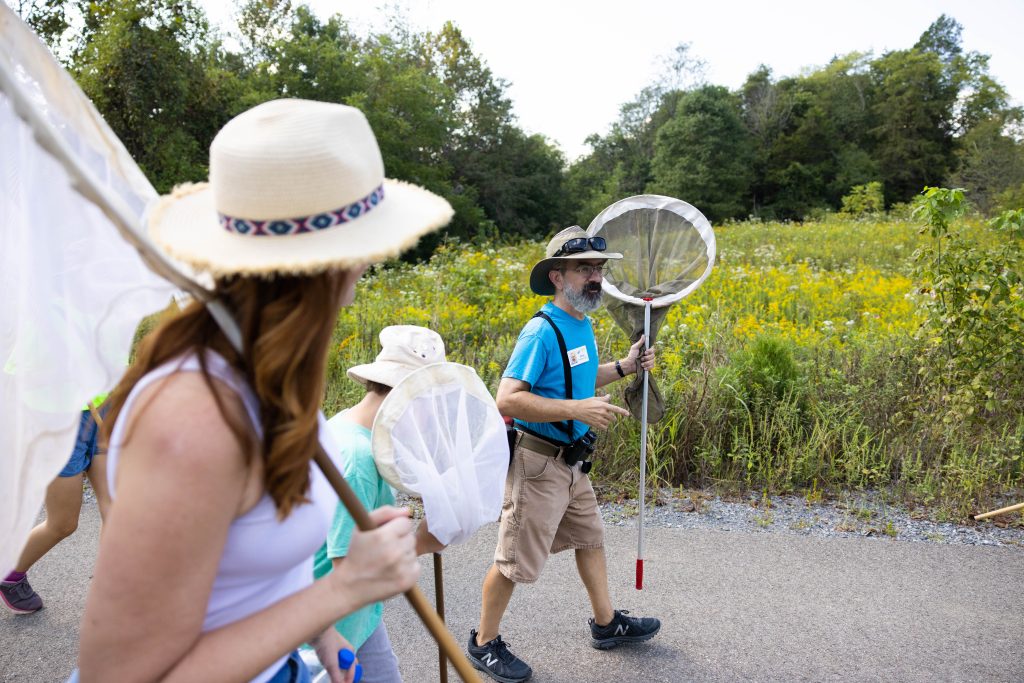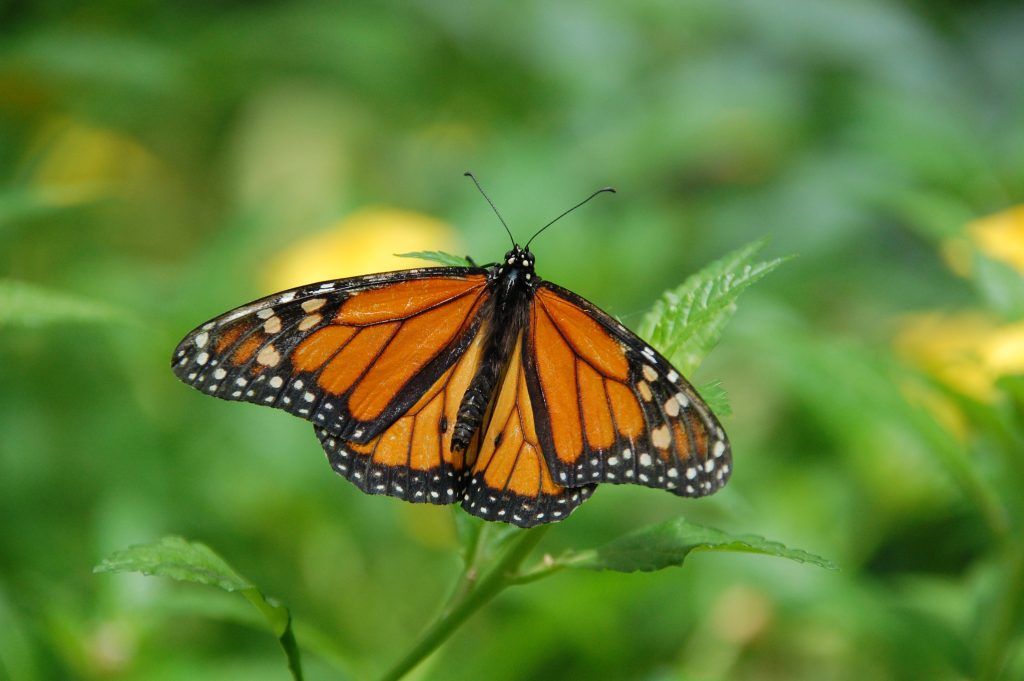
Protecting Monarch Migration
Written by: Scarlett Rockhold, Communications Manager at Zoo Knoxville
Every autumn millions of monarch butterflies migrate from eastern Canada to spend the winter in the Oyamel forests in southern Mexico. While the distance the monarchs travel during their migration is incredible, what’s even more fascinating is how they know where to go. Each migration is a new generation, so they do not learn from others where to go and how to get there. Instead it’s coded in their DNA. There are multiple generations of monarchs each year and while it takes several generations to make the trip from Mexico to Canada, it only takes one generation, known as the super generation, to make the return trip.
Adult monarchs typically live from 2 to 6 weeks. The super generation however, can live up to 9 months. There are several factors that contribute to this longer life span. These late summer butterflies go into what is called reproductive diapause, which means they cannot reproduce. Conserving their energy allows them to live longer. They also live in cooler temperatures which slows their metabolism leading to a longer life.
When this super generation arrives in Mexico, they enter a hibernation like state and hang dormant on trees. They are able to use stored energy from their trip and do not eat during this phase. Tens of thousands of monarchs huddle together for warmth on trees creating a forest made of butterflies.
It is important to protect this miraculous migration. The population of monarchs that make the migration is decreasing rapidly. This means the great monarch migration itself is being threatened. Understanding how these migratory monarchs make their incredible journey from Canada to Mexico is crucial in understanding genetics. Learning more about monarch genetics could help scientists understand more about human genetics. So much of the miraculous migration of these monarch butterflies is a mystery, and if the migration is lost we lose finding out how they know where to go.
There are several causes of decline in the migratory monarch population. Threats include climate change, pesticide use, and habitat loss. While the population of North American monarchs is decreasing rapidly, the good news is there are practical ways you can help! Ways to help include: participating in monarch tagging, planting native milkweed, limiting the use of pesticides, and adding native plants to your landscape that will provide a steady supply of nectar from early spring to late fall.
For over ten years, Steve McGaffin, Curator of Education at Zoo Knoxville and director of the TN Butterfly Monitoring Network, has been assisting with Monarch Watch research to study the southward migration. Each year he leads groups to Seven Islands State Birding Park where the goal is to catch and tag monarch butterflies. The participants will very gently place a sticker on the underside of its wing before releasing the monarch back into the wild. The sticker which is harmless to the butterfly, includes a unique ID number as well as contact information for monarchwatch.org.
Those that find the tagged monarchs are encouraged to reach out to monarchwatch.org and report information such as the date and location the monarch was found as well as the unique ID number. Monarch tagging allows scientists to not only study migration patterns of the monarch but also helps in being able to track the migratory monarch population.
In addition to the Monarch tagging initiative, Zoo Knoxville is also a founding member of the North American Monarch SAFE program. This SAFE program galvanizes action for the monarch butterfly by increasing conservation efforts across zoos, aquariums, their professional networks, and communities. In partnership with the North American Monarch SAFE, Zoo Knoxville’s education department runs the Tennessee Butterfly Monitoring Network (TBMN). The TBMN trains volunteer community scientists to monitor butterfly population densities on managed lands and provides monarch and pollinator education programs.
Visit monarchwatch.org to learn more about how to get involved in the fight to save the great monarch migration and click the link below to register for this years monarch tagging event!
